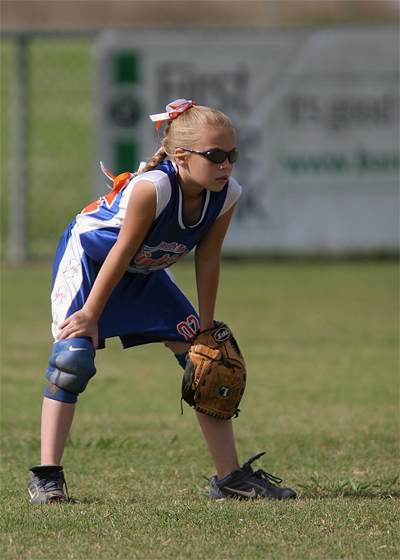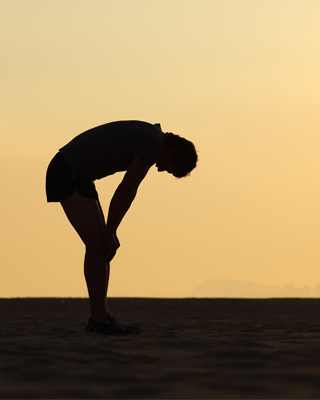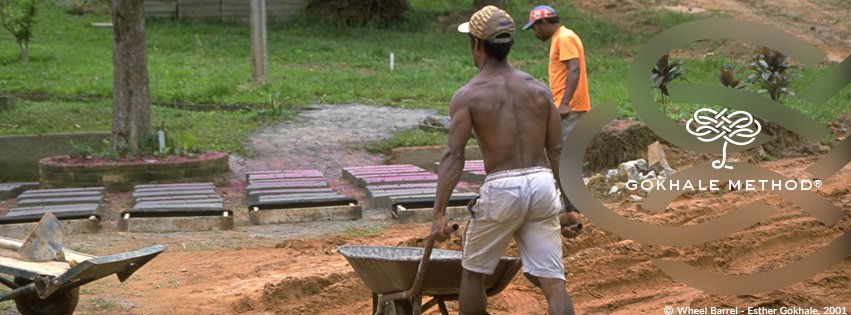You’re on a long hike, and it’s been a while since you began. Your surroundings are beautiful, and you want to take a moment to soak it all in. But, there’s nothing nearby to sit on and the ground is damp. What do you do?

Resting up for the next all-out effort.
The best restorative position I know for these situations is the isometric resting position that includes hip-hinging to park your hands on your knees with straight elbows. Steps to relief: hinge your back, place the heel of each hand on its respective knee, lock your elbows, permit your shoulders to hike up in a slack manner, relax your belly, let your pelvis nest between your legs, and rest. This resting position counterbalances some different parts of your body and requires almost as little muscular effort as reclining in a chair or lying in a bed. It has a further advantage of allowing you to shut yourself off from the hullabaloo to recoup your strength to keep going.
Sightings of this position are common on athletic fields, tracks, and courts. Athletes often gravitate toward this position (or variations of it) to catch a quick breath between points, rest on the sideline of an empty playing field, or recover some lung capacity after a sprint.


This isometric rest position is a favorite among all kinds of athletes.
At the beginning of this clip, you can see both ultimate frisbee athletes employing this resting position to catch a breath before play resumes.
Common mistakes to doing this position:
-
Rounding your back significantly. When you relax your muscles, you’re also relaxing some protective mechanisms that keep your back safe. Relaxation comes with vulnerability, so don’t subject your joints to significant distortion without muscular protection. It’s your form that makes it safe to relax.


Left: This runner has more rounding in his back than is ideal. Rounding loads the spinal discs and threatens the spinal nerves. Right: Because the spinal discs are much less loaded in this position than in a hip-hinge, a small deviation from an ideal hip-hinge position is usually well-tolerated. Photo by Alex Fraser for UltiPhotos.
-
Leaving your elbows bent. Now you can’t REALLY enjoy the delicious letting-go.
-
Craning your neck up. Most likely, you don’t need to track what’s going on (and still look ahead). Check out for a minute. Look down at the ground for a visual break as well as a muscular break. If you do need to look up, learn how to pivot your skull on your neck, rather than crane and strain within the stretch of your neck.
When is your favorite time to employ this position?



Comments
Trying your luck at sports
Trying your luck at sports betting could be a great way to unwind and have a good time. All you need to know to play carefully and keep your money is the golden mean. This is the betting site I use when I'm feeling lucky: https://goldsbett.in/